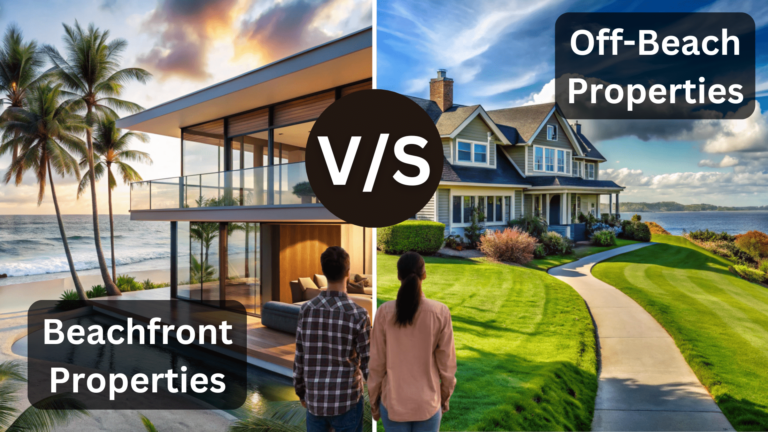Explore the differences between manufactured and modular homes with a focus on VA Loan Eligibility for Manufactured and Modular Homes. This guide explains how each home type qualifies for VA loans—highlighting key requirements such as permanent foundations, clear title, and proper appraisal. It also compares costs, construction speed, and long-term value while offering practical tips and expert insights for first-time homebuyers, seasoned investors, and real estate professionals.
Table of Contents
ToggleUnderstanding the Basics
Before diving into the specifics, it’s important to clarify the terminology and the essential characteristics of each housing option:
- VA Loans: These are mortgage loans guaranteed by the
- They offer veterans, active-duty service members, and eligible family members the benefits of competitive interest rates, no down payment (in many cases), and relaxed credit requirements.
- Manufactured Homes:
- Definition: These homes are built entirely in a factory and adhere to the U.S. Department of Housing and Urban Development (HUD) standards.
- Construction: They arrive at the home site in one or more sections and may be installed on a temporary or permanent foundation.
- Key Considerations: To qualify for a VA loan, a manufactured home must be placed on a permanent foundation and meet certain additional criteria.
- Modular Homes:
- Definition: Also constructed in a factory, modular homes are made up of sections (modules) that are later transported and assembled on a permanent foundation at the building site.
- Construction: They are built to comply with local building codes, making them essentially indistinguishable from traditional site-built homes once complete.
- Key Considerations: Their construction on a permanent foundation generally makes them more straightforward candidates for VA loans.
Understanding these basics lays the groundwork for a deeper exploration into why VA loan eligibility may vary between manufactured and modular homes.
VA Loan Eligibility Criteria
VA loans are designed to facilitate homeownership for military personnel and veterans, but they come with specific eligibility criteria that can affect the type of property financed. Here’s what you need to know:
Real Property Status
- Modular Homes:
- Eligibility: Since modular homes are built on permanent foundations and comply with local building codes, they are typically considered real property.
- VA Loan Approval: This status makes them easier to finance with VA loans, as they meet the essential criteria set forth by the VA.
- Manufactured Homes:
- Eligibility: Manufactured homes can be more challenging to finance because, unless they are installed on a permanent foundation, they may be classified as personal property rather than real property.
- Permanent Foundation Requirement: For VA loan qualification, manufactured homes must be affixed to a permanent foundation, with proper documentation and adherence to HUD standards.
Ownership, Title, and Appraisal
- Clear Title: Whether you’re considering a manufactured or modular home, ensuring that the property has a clear title is critical.
- Appraisal: The home must be appraised as real property. This is generally straightforward for modular homes, but additional inspections and documentation may be necessary for manufactured homes.
Loan Limits and Financial Considerations
- Numerical Example:
- Imagine a modular home is priced at $250,000. With VA loan benefits, eligible borrowers might secure financing for the full amount with competitive interest rates and little or no down payment.
- Conversely, a manufactured home priced similarly may require further proof of compliance—such as verification of a permanent foundation—which can complicate the loan process or necessitate additional documentation.
Key Differences: Manufactured vs. Modular Homes
Understanding the advantages and limitations of each home type can help you make an informed decision. Let’s break down their respective pros and cons:
Manufactured Homes
- Pros:
- ✔ Affordability: Generally, manufactured homes offer a lower initial purchase price compared to modular homes and traditional site-built homes.
- ✔ Faster Construction: Built in controlled factory environments, these homes can be constructed and delivered faster, avoiding delays from weather conditions.
- ✔ Modern Efficiency: Many are now designed with energy-efficient materials and appliances, reducing long-term utility costs.
- Cons:
- ✖ Loan Qualification Challenges: Without a permanent foundation, manufactured homes may struggle to meet VA loan criteria, often necessitating additional paperwork or modifications.
- ✖ Potential Depreciation: If not well-maintained or located on leased land, they might depreciate over time, similar to vehicles.
- ✖ Market Perception: Some lenders and buyers perceive manufactured homes as less prestigious, which can affect resale value.
Modular Homes
- Pros:
- ✔ Ease of Financing: Their status as real property—thanks to permanent foundations and compliance with local codes—makes them more likely to qualify for VA loans without extra complications.
- ✔ Design Flexibility: Modular homes often allow for a higher degree of customization and design options compared to manufactured homes.
✔ Long-Term Investment: These homes tend to appreciate similarly to traditional homes, enhancing their value as an investment over time.
- Cons:
- ✖ Higher Initial Cost: The customization and permanent construction techniques can result in a higher upfront cost compared to manufactured homes.
- ✖ Longer Assembly Time: Although still built in factories, the process of assembling the modules on-site may add to the overall construction timeline.
Data-Driven Comparison
Visualizing the differences between manufactured and modular homes can be made easier with a comparative table:
| Feature | Manufactured Homes | Modular Homes |
| Initial Cost | Typically lower (e.g., ~$150K to $200K) | Generally higher (e.g., ~$200K to $300K) |
| Construction Speed | Fast, due to factory-controlled processes | Quick assembly but requires on-site setup |
| Foundation Requirement | Must be permanently installed for VA eligibility | Built on a permanent foundation |
| Loan Qualification | May need additional documentation and inspections | Generally straightforward for VA loans |
| Market Perception/Resale | Potential for depreciation if not maintained well | Appreciates similarly to traditional homes |
| Customization Options | Limited compared to modular homes | High, with many design and layout choices |
Practical Strategies for Navigating VA Loans
Taking the right steps when applying for a VA loan can significantly streamline the process. Here are some strategies to consider:
Documentation and Verification
- Gather Essential Documents: Ensure that you have all necessary documentation ready, including proof of service, credit history, income verification, and—in the case of manufactured homes—documentation that confirms the installation of a permanent foundation.
- Verification of Construction Standards: For manufactured homes, verify that the construction adheres to HUD standards and that the home is indeed classified as real property once installed on a permanent foundation.
Expert Consultation
- Speak to Real Estate Professionals: Consult with real estate agents and mortgage specialists who have experience with VA loans and non-traditional home types. Their expertise can help you avoid common pitfalls and identify potential challenges early in the process.
- Engage with Lenders Early: Reach out to VA-approved lenders for pre-approval and ask about any specific requirements for manufactured or modular homes. Early engagement can clarify which type of property best fits your needs.
Market Research and Comparative Analysis
- Local Market Trends: Study local real estate trends to understand how both manufactured and modular homes perform in your area. For instance, if modular homes have a history of better appreciation and resale value, they may be the better long-term investment despite a higher initial cost.
- Numerical Comparisons: Utilize our VA Loan Calculator to run different financial scenarios. Compare the overall cost, monthly payments, and long-term equity growth for both manufactured and modular homes.
Long-Term Financial Planning
- Budgeting for Future Costs: Consider not only the purchase price but also potential maintenance, insurance, and renovation costs. Modular homes, while often more expensive initially, may incur lower maintenance costs over time due to their construction quality and design.
- Equity and Appreciation: Assess the long-term value of your investment. Modular homes generally appreciate similarly to traditional homes, making them potentially more lucrative over time. Factor in these aspects when planning your financial strategy.
Additional Considerations for Diverse Audiences
This article is designed to cater to a wide range of readers. Here’s how the information applies to different groups:
First-Time Homebuyers
- Simplified Processes: For those new to homebuying, understanding that modular homes often offer a simpler financing process with VA loans can reduce stress. Follow our checklist and use interactive tools to guide you step by step.
- Affordability Factors: Manufactured homes may be more affordable upfront, but ensure you factor in the additional documentation or foundation requirements before making a decision.
Seasoned Investors
- Long-Term Investment: Investors looking at long-term appreciation might favor modular homes due to their resale potential and market stability. However, if you’re looking at a lower initial investment, manufactured homes might offer an attractive entry point—provided you address the financing challenges.
- Data-Driven Decisions: Use numerical examples and our VA Loan Calculator to simulate potential returns on investment, comparing both home types.
Real Estate Professionals
- Client Education: Real estate agents can use this guide as a resource to educate clients about the nuances between manufactured and modular homes, especially regarding VA loan eligibility.
- Market Insights: Incorporate local market trends and buyer feedback into your analysis to provide clients with comprehensive advice tailored to their financial situation and housing needs.
Conclusion
Deciding between a manufactured home and a modular home when applying for a VA loan involves multiple layers of consideration—from construction methods and loan eligibility to long-term investment potential and market trends.
Key Takeaways:
- Modular Homes:
- Are generally easier to finance with VA loans due to their classification as real property.
- Offer customization and higher long-term appreciation potential, albeit at a higher initial cost.
- Manufactured Homes:
- May offer a lower entry price and faster construction but require additional steps (such as verifying permanent foundation installation) to meet VA loan criteria.
- Could be more challenging to finance and may have different long-term value dynamics.

